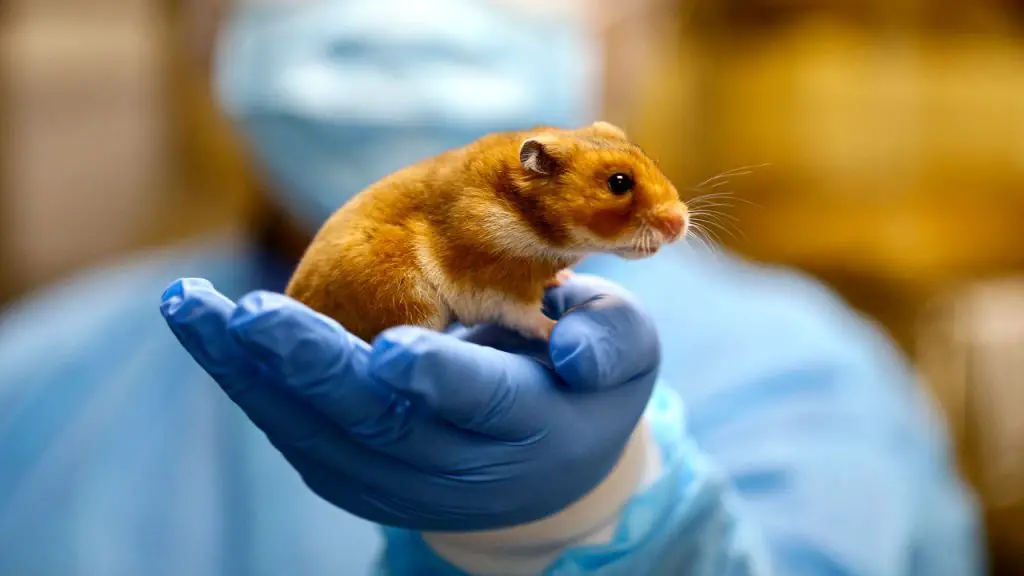Hamster’s behavior and character are not so well known to us as the character of the other pets living with us. This raises many myths about them This is an effort to clear those misunderstandings A proper research was conducted and we are able to produce a series of three articles be sure to check the other three articles
- The Truths about the Every Day Myths about hamster
- Daily care and related diseases: The myths and truths about hamster
- Feeding environment and cage size: The myths and truths about hamster
Myth:
Hamsters are as domesticated as cats and dogs, and they are easy to learn and interact.
Truth:
Hamsters are more like “wild animals” than other cats and dogs.
First of all, the pet hamsters we keep today are quite different from the wild hamsters, and the released pet hamsters cannot survive in the wild. However, hamsters are still not as domesticated as other pets. Part of the reason is that the domestication time is too short. Cats, dogs, and livestock have been domesticated by humans for thousands of years, but hamsters have only been kept as pets by humans from around the 1940s, and the total domestication time is less than 100 years. Therefore, hamsters still retain many wild habits.
Milk mice and milk cats and dogs are different. They don’t want to interact with humans when they are born. Maybe they will be better when they grow up. Therefore, the owners of the mouse don’t expect to take the hamster home and start teasing. We need to spend some time to domesticate hamsters so that they can accept human interaction and use. This domestication process may take several weeks or even months.
Myth:
Hamsters are cruel and aggressive.
Truth:
Hamsters, like other animals, only react accordingly to their environment.
Some people may have nightmarish childhood memories of hamsters: hamsters not only often bite people, but also kill each other with their caged companions, and even hamster mothers will eat their babies. Some people who don’t understand think that hamsters are “cruel and evil” creatures, and even use this as a reason to abuse hamsters, which is very regrettable. But humans should actually reflect on it.
Perhaps this is because we have not given hamsters the care they deserve. This is not to accuse someone from the commanding heights of morality, but simply to point out a basic fact: any animal will respond to the environment in which it is located. Let us explain each phenomenon.
A hamster bites a person, probably because the hamster’s living conditions are poor. Imagine that if a hamster lives in a small space, it is already very nervous. At this time, the owner stretches his hand in, and the hamster will feel that someone has violated its narrow place, so it will make a fierce counterattack including bites. This is a kind of aggressive behavior inside the cage, and putting the hamster in the open space outside the cage will get better.
Killing companions in the cage: Syrian hamsters and Chinese hamsters are solitary animals and have a strong sense of territory. Putting solitary animals in a cage to share space violates their natural nature. It is a very cruel behavior in itself. Don’t blame them for fighting each other for being cruel. For example, we put the snake and the white mouse in a cage, and the snake ate the white mouse. Will we blame the snake for being “vicious”? Of course not, so what position do we have to condemn solitary hamsters? What about the first-line, third-line, and in-laws that are slightly more social?
There is a difference between being social and being able to co-cage. In nature, hamsters that live together must be of a uniform species and must be mutually selected. Hamsters with different personalities will be abandoned and re-entered into other groups.
But this is not the case under human breeding conditions. We have given “group members”, and once the integration fails, the hamster cannot leave the cage. Some owners are not experienced enough to separate the hamsters in time when fighting, and the living conditions are not right, and even the situation of heterogeneous cages occurs, so the fight between hamsters cannot be avoided.
For example, although we humans are social, we get together when we interact with others, and we disperse when we don’t. If we put two people we never knew in the same prison, can we ask them to get along?
Eat your own pups: A hamster mother will not eat her own pups for no reason. In nature, if hamsters feel uncomfortable, weak, or unable to raise their children, they may kill the children in time to stop the damage. This is a natural evolution of “culling” and may also occur in other species. Body. In the domestic environment, hamsters still retain this natural instinct. If the hamster’s mother is too young for pregnancy or does not receive enough care and nutrition, a similar situation may occur.
If humans themselves fail to take good care of hamsters and ignore the basic needs of hamsters, then we are not qualified to blame hamsters for their behavior. It is like saying that children do not study well. We must first look at the environment given by their parents and whether the school has sufficient resources. If the parents’ guidance is wrong, or the school teachers are not well educated, and the children are not given the care they deserve, how can we blame the children for poor reading?
Misunderstanding:
As long as we raise hamsters scientifically, we can successfully domesticate hamsters.
Truth:
Most hamsters are not very close relatives and interact with people.
Some people think that hamsters will become very cute and amiable as long as they are well taken care of and can interact with humans at will. If the hamster still bites, it must be a problem with the hamster itself. But how? According to a survey of mouse friends by hamster hide out, it is found that only 30% of hamsters will actively interact with humans, and the other 70% of hamsters will not actively let humans pick up and play with them.
This shows that most hamsters are actually not very relatives. Some hamsters just love to be alone. This is also related to the short domestication of hamsters. If we are responsible enough, we should be aware of the possibility that the hamster may not be relatives before we bring the hamster home.
We must be prepared to continue to take care of the hamster in this situation, and we cannot wait until we find that the hamster is not available. It is really very regrettable to give it away.
Misunderstanding:
All hamsters love running wheels.
Truth:
The degree to which hamsters love running wheels varies from mouse to mouse.
All hamsters used the running-wheel. The average distance was 8.3km per day(8872 revolutions). The minimum per animal was on average 0.63 km per day; the maximum was 18.56 km per day. These distances are not equivalent to locomotion in a cage or in the natural habitat (Sherwin 1998a).
From this point of view, the maximum running wheel distance of a hamster can reach 18.56km, but the minimum running wheel distance is only 0.63km per day, and the average can reach 8.3km. The article also specifically stated that the distance of this running wheel cannot be equated with the hamster’s daily activity distance (for example, free running in the cage).
Most hamsters are keen on running wheels (ave=8.3km), this is a fact. But there are always exceptions (min=0.63km). Some hamsters just don’t care about running wheels. They may prefer to burrow, groom, and bite cages. . . . . . In this case, you should first judge whether it has always been like this or suddenly. As long as it’s not a health problem, you don’t have to worry too much.
But this is definitely not the reason for not providing running wheels for hamsters to run. Whether you like running wheels or not, we should provide hamsters with a running wheel of the right size (dwarf 20, bear 30, bigger the better) to relieve stress. We often see people asking themselves if the hamster does not run the wheel, is there a problem or is it no longer necessary? From the statistical data, most hamsters love to run wheels, so it is impossible to have so many hamsters who do not like to run wheels.
Hamsters are nocturnal animals, maybe hamsters run around at night and you don’t know it. We can’t remove the running wheel at night and install it again during the day to let the hamster run. This is against the hamster’s routine. A more reasonable solution is to use a quieter running wheel and place the hamster farther away. If you can’t do this, you may not have the conditions to raise hamsters.
Misunderstanding:
In-law rats can hardly be domesticated, it is impossible to get started, only experienced people can raise them.
Truth:
In-law rats can be raised, can be domesticated, not only for experienced people.
The character of a hamster depends largely on the individual, not the hamster’s species. Like other hamsters, the in-laws have good and bad conditions. According to the hamster hideout survey, 70% of in-laws are willing to be held by humans, and slightly less (47%) of hamsters are described as friendly. They are not impossible to be domesticated, as long as they are raised scientifically, they will still show a friendly side.
They are considered difficult to domesticate, largely because they are small and very active. Their rapid activity does not mean that they cannot be domesticated, but that they have energy and love activities.
But from a statistical point of view, Xiong is indeed a little more friendly
Misunderstanding:
I see Syrian hamsters in pet shops are all put in a cage, which means that bears can also be caged.
Truth:
Bears and other solitary hamsters should not be caged. They love living alone and value territory.
Pet shops do keep hamsters in a cage, but their starting point is to save space, not for hamsters. If you ask a friend who works in a pet store, they may tell you more truth. Bears, Chinese hamsters, and even the first and third line and their in-laws in a cage may kill their companions in the cage, but they do not let the guests know. Just clean up the dead hamsters before opening the shop the next day.
Another reason is that the hamsters sold in pet stores are very young. For example, bears do not leave their parents until they are 8 weeks old to live alone. Before that, they have to live with their siblings. The bigger the hamster, the stronger the sense of territory. The hamsters sold in pet stores may be on the boundary between the ages that need to be caged and those that do not need to be caged.
Syrian hamsters are solitary animals by nature and have a strong sense of territory, they like to stay with a rat. Put the two together, they will instinctively treat each other as a threat and fight each other. Even if this instinct is temporarily suppressed, it may explode in the future. There were even cases of fighting and killing after a year of co-cage. Even if you are lucky enough to see Syrian hamsters in a cage, it is not recommended. Because this is against their nature, they will not feel happy, which is a very cruel practice.
Everything that is commonly known is not true. This is the reason these are known as Myths. We have put our effort to clear many misunderstandings about the hamster. In this article, we have covered the general misconceptions about hamsters. Be sure to read our other three articles for more in depth knowledge about hamsters.




